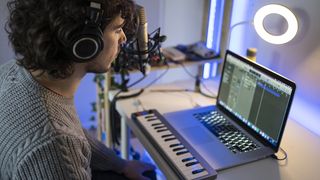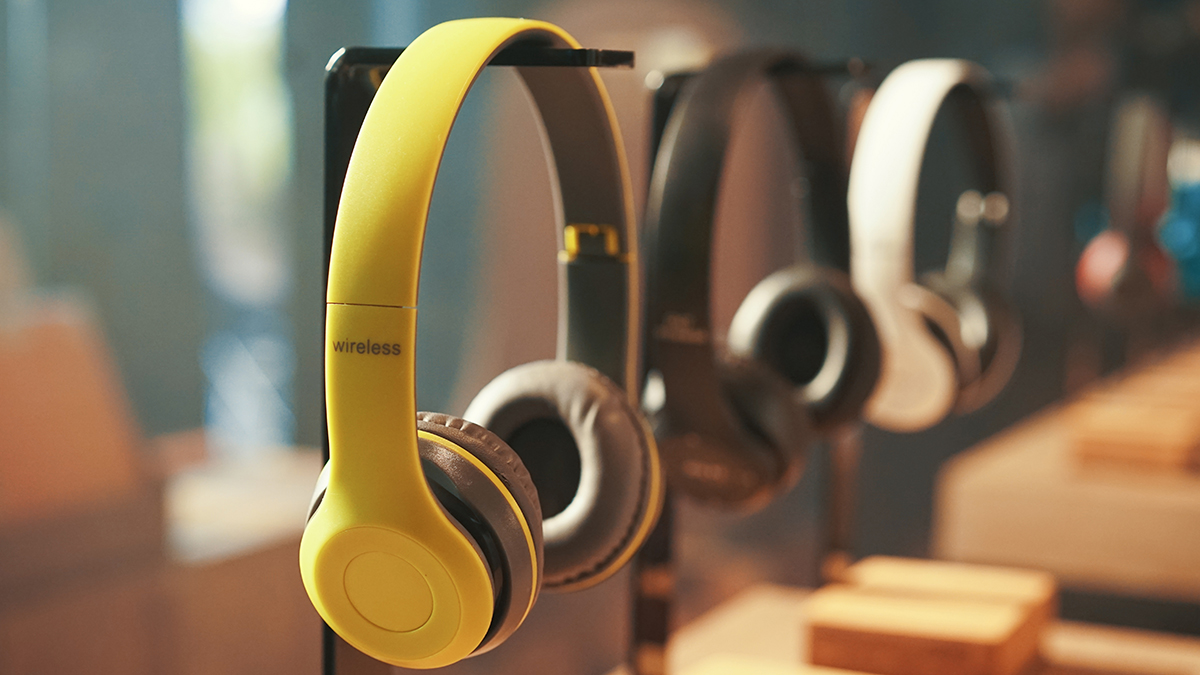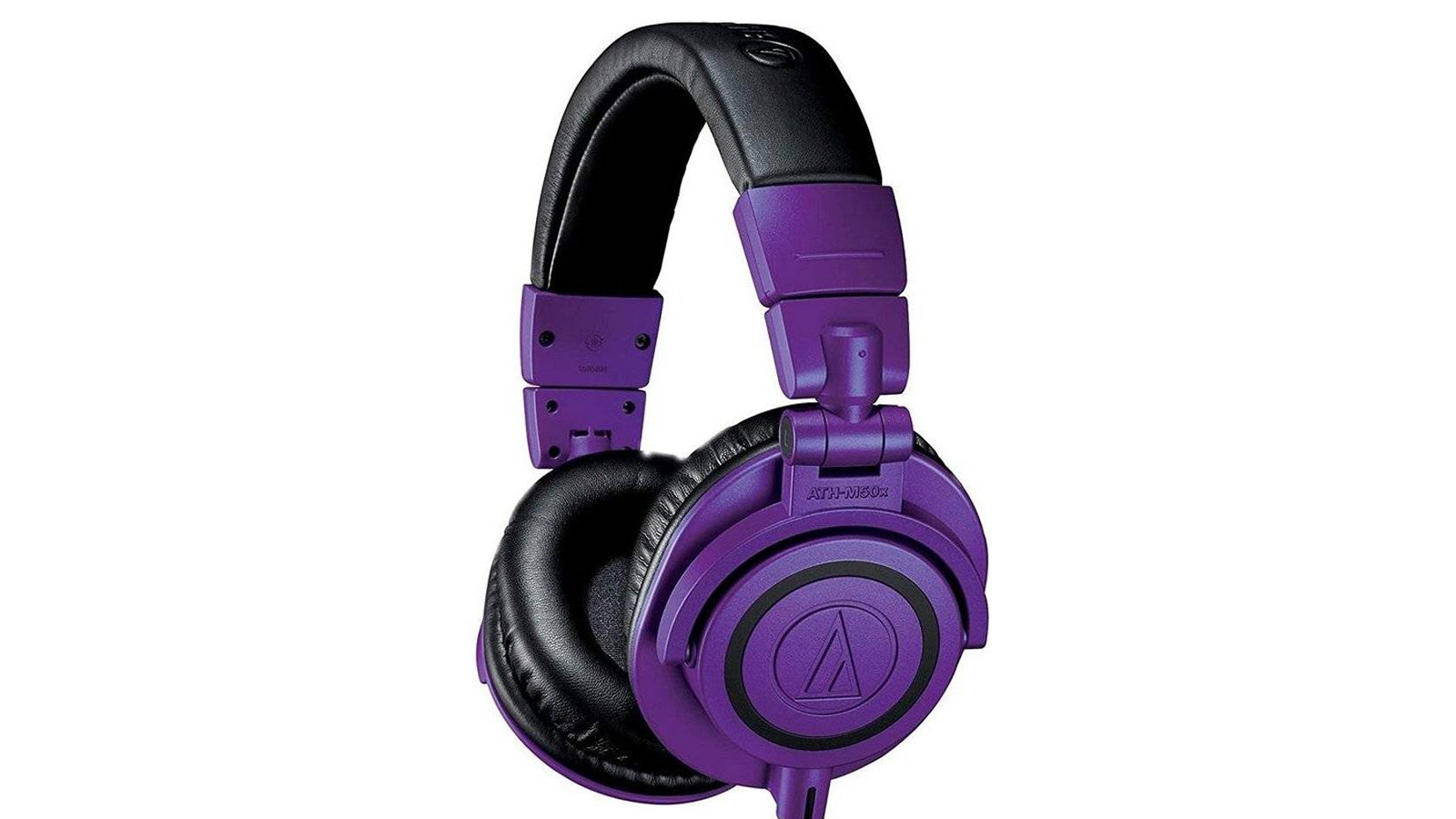How to Use Bluetooth Headphone While Tracking
Can you produce music using Bluetooth headphones?

Bluetooth is the wireless communication protocol that has helped to revolutionise the way we share data and, by association, consume music. Bluetooth speakers now adorn the bookshelves, sideboards, bedrooms, cars - and even shower cubicles - of many homes, giving us the freedom to enjoy music practically anywhere without the hassle of pesky cables getting in the way.
Naturally, the technology has extended beyond regular speakers into the world of headphones, liberating us from clingy cables and allowing us to enjoy an unfettered personal listening experience. While a pair of wireless Bluetooth headphones might be the pinnacle of free-roaming entertainment when listening to music casually, however, what about if you're the one producing the music? If you use headphones to monitor and mix the music you create, the idea of not being tethered to your desk by a cable surely has a broad appeal, so the question is - can you produce music using Bluetooth headphones, and if yes, should you?
We've already tackled the headphones vs studio monitors debate, so we won't be taking on that particular issue in this article.
The big advantage
The obvious advantage that Bluetooth headphones have over wired studio headphones is the convenience offered by not being tethered to your computer or audio interface by an irritating cable when working. On the face of it, this would appear to be a game changer - no more getting tangled up in the cable when playing drums or guitar, freedom to move around when singing or checking out mixes - what's not to like? Not so fast, however! Most things in life are a tradeoff, and while wireless headphones do offer unparalleled freedom of movement, this is achieved at the expense of other basic conveniences we've taken for granted for a very long time from wired headsets.
Latency
Chief among the potential issues with Bluetooth cans is latency, which is the amount of time it takes for audio to be converted into a compressed data stream and transmitted over Bluetooth from the source to your headphones. If you're listening to a finished piece of music for pleasure, latency is not such a big deal, as you're listening to a single, cohesive chunk of pre-recorded audio material. When programming and recording tracks however, adding new parts to existing ones, that latency will introduce a timing offset between what you're playing and what you're playing to, which means that the luxury of wireless audio becomes a lot more of a headache.
On our system, output latency with Logic Pro X jumped from 7.7ms to a whopping 135.3ms when switching to a Bluetooth audio driver
All DAW's inherently introduce some degree of latency, which can usually be kept under control via your disk buffer settings enough to work adequately well when using wired headphones. However, transmitting audio over Bluetooth is a heavy load for a DAW - on our system, output latency with Logic Pro X jumped from 7.7ms to a whopping 135.3ms when switching to a Bluetooth audio driver.
So while it's perfectly possible to perform some music production tasks using Bluetooth cans, the added latency means that we wouldn't recommend using them when it comes to recording any kind of live performance material. If every word you sing into a microphone, drum sound you trigger from a pad or note you press on a MIDI keyboard comes back into your cans almost a fifth of a second late, getting a good performance will be pretty much impossible. Plus, if any aspect of your work - such as, for instance, in-depth audio waveform editing - relies on the audio being in sync with what's happening on the display, the latency introduced by Bluetooth can become a real problem, as the audio will always be behind the action on the screen. So if your playhead crosses a particular peak in the waveform, for example, the audio of that transient will occur in your cans several hundred milliseconds later, making it almost impossible to get a true fix on your edit point.

Connection issues
The lure of wireless monitoring brings other caveats too. Like all wireless technology Bluetooth can be prone to interference from other electronic devices and other technical gremlins, which can lead to momentary losses in connection. In a domestic environment, these can be tolerated relatively easily, but this kind of thing is not ideal in a studio setting. Likewise, the transmission range can vary from model to model. Granted, most music producers are unlikely to stray too far from the desk while working on a track, but if you're taking the wireless route, make sure you plump for a pair of cans with enough performance to allow for some degree of movement without dropouts - otherwise, what's the point?
Battery life
Being a wireless protocol, all Bluetooth devices require the use of batteries, either single-use or rechargeable, and headphones are no exception. While many of the more efficient models can provide hours of battery life, they all need to be recharged at some point. If that point happens to be the exact time at which you reach for your cans for an important task, only to find them unresponsive due to a dead battery, it can be frustrating. The efficiency of rechargeable batteries also degrades over time, meaning that you'll need to recharge more frequently the more you use them. Plus, if the batteries are non-replaceable, that means investing in a new pair of cans when the batteries eventually give up the ghost.
Meanwhile, some models of Bluetooth cans will take it upon themselves to use audible voice prompts to announce things like how much battery life is remaining, which can be irritating if you're trying to EQ your snare drum at the time.
Data compression
Since Bluetooth is a wireless technology, the audio data it transmits is compressed in order to make it easier to send across the air. This compression invariably results in a loss of audio quality, since, unlike with cabled cans, the available bandwidth of Bluetooth isn't enough to reliably carry WAV or AIFF quality audio. Despite the relative high quality of the codecs used by many current Bluetooth headphone models to compress audio, using them to produce music means that you'd be dealing with compressed audio from the outset, with all the possible pitfalls - such as compromised bass response and loss of high-end detail - that this entails.

Conclusion
There's no doubt that a good pair of studio headphones is an essential item in every music producer's toolbox, and the freedom offered by that lack of a cable is undoubtedly an attractive proposition. When you examine the list of pros versus cons, however, there's just too much stacked up in the cons column relative to the pros to make Bluetooth headphones a truly viable choice for professional music production work.
If you really want to combine good studio performance with the convenience of wireless for casual listening, we'd recommend trying a pair of Bluetooth-enabled cans that also have a wired connection option. For instance, Audio Technica's ATH-M50xBT can be connected with a cable for conventional wired use in the studio, but offer the option to untether for wireless operation when required.

Dave has been making music with computers since 1988 and his engineering, programming and keyboard-playing has featured on recordings by artists including George Michael, Kylie and Gary Barlow. A music technology writer since 2007, he's Computer Music's long-serving songwriting and music theory columnist, iCreate magazine's resident Logic Pro expert and a regular contributor to MusicRadar and Attack Magazine. He also lectures on synthesis at Leeds Conservatoire of Music and is the author of Avid Pro Tools Basics.
How to Use Bluetooth Headphone While Tracking
Source: https://www.musicradar.com/news/can-you-produce-music-using-bluetooth-headphones
0 Response to "How to Use Bluetooth Headphone While Tracking"
Enregistrer un commentaire